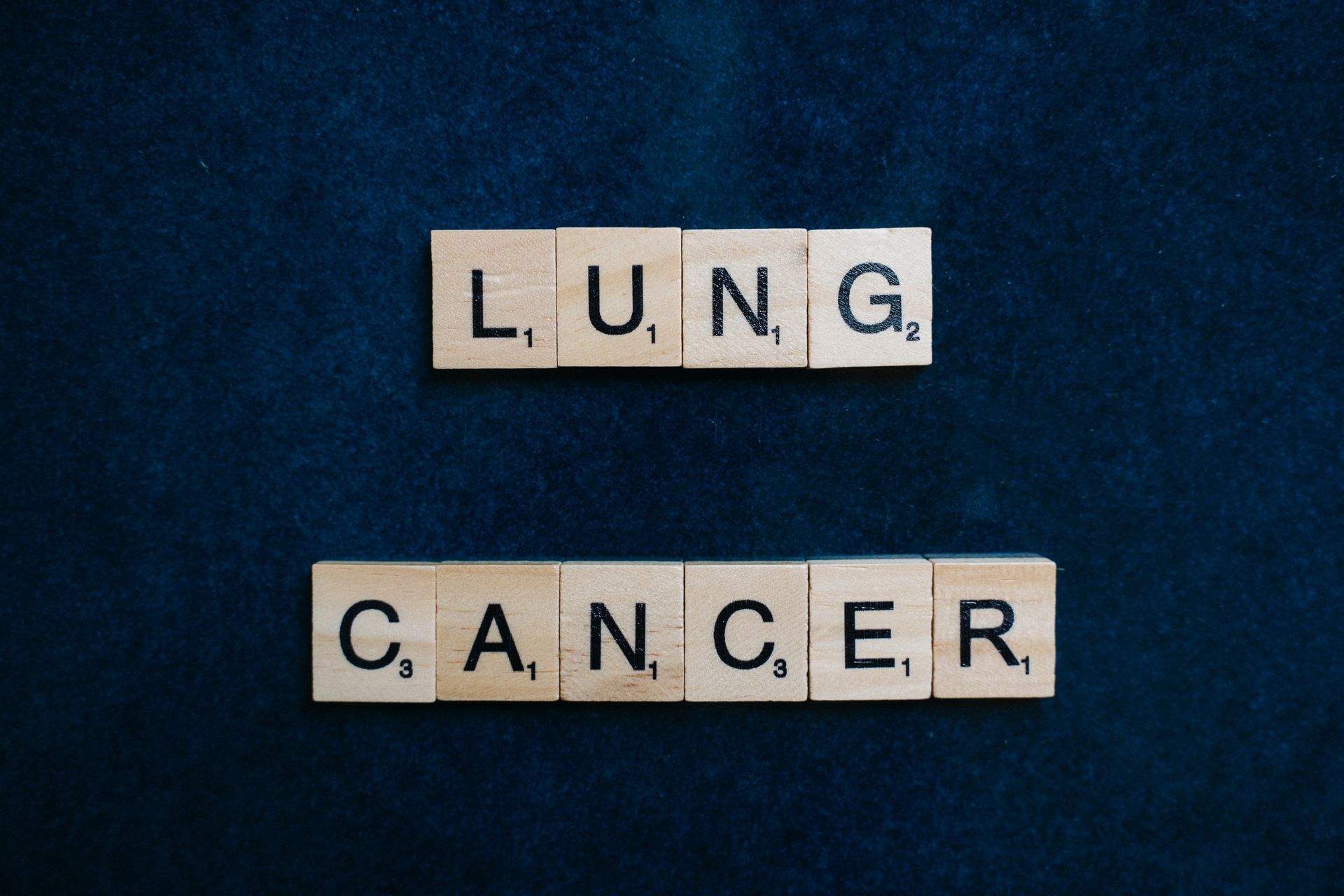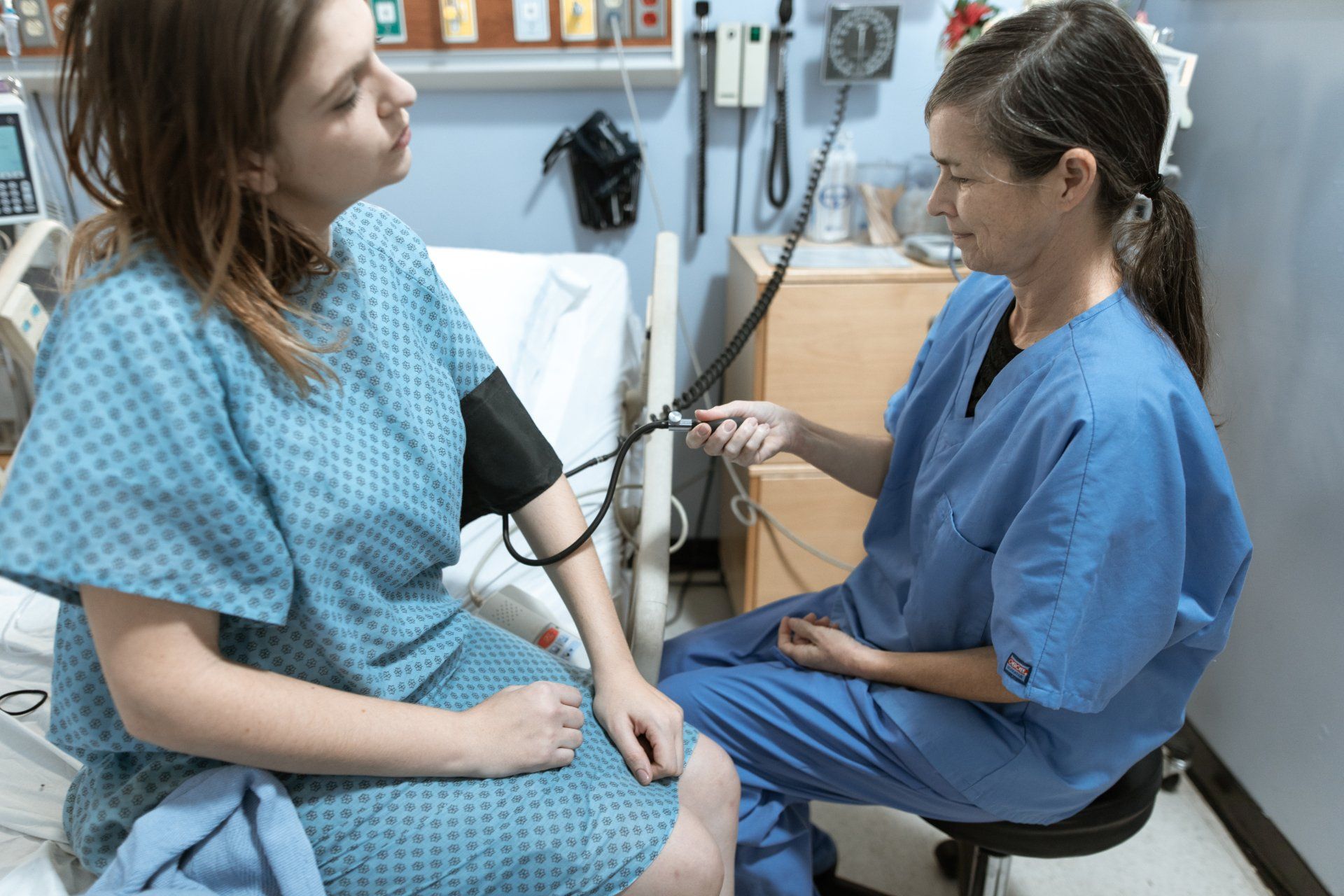Lung Cancer in Non-smokers

In layman's thinking, lung cancer would affect only those who are heavy smokers or have had lung diseases. Although this would increase their lung cancer risk, that's not always the case. People with risk factors for lung cancer or exposure to dangerous chemicals can also develop lung cancer.
The Centers for Disease Control and Prevention (CDC) records 20,000-40,000 cases of lung cancer in non-smokers or people who have smoked not more than 100 cigarettes in their entire life.
Exposure to smoke caused about 7,300 of these lung cancers, while radon contributed to 2,900 cases. Like every other cancer type, lung cancer spreads fast.
So, what does this tell us? First, lung cancer isn't limited to smokers. In this article, we'll discuss the possibility of lung cancer development in non-smokers and why this is possible.
What Type of Lung Cancer Affects Non-Smokers?
The non-small cell lung cancer (adenocarcinoma) is common in non-smokers and affects about 50-60%.
Squamous cell carcinoma affects 10-20% of non-smokers, small cell lung cancer affects 6-8%, and the other types of lung cancer affect a smaller fraction.
Let's have an in-depth look at these lung cancer types. Shall we?
Adenocarcinoma
Adenocarcinoma takes the lead in affecting non-smokers. If you're diagnosed with adenocarcinoma, it means cancer developed in the tissue lining the inside of your organs—the glandular tissue. These organs include the colon, esophagus, lungs, prostate, and pancreas. In this case, it's the lung.
Adenocarcinoma develops in the lung periphery and alveolar type II cells and occurs when the cells of your glandular tissue start to grow out of control.
Squamous Cell Carcinoma
Squamous cell carcinoma, on the other hand, is a non-small cell lung cancer. This type occurs when the squamous cells lining the bronchi of the lungs start to multiply. These tumor cells eventually metastasize and spread to other body parts.
Do you know what's puzzling about this cancer of type? Men are more likely to develop squamous cell carcinoma than women, which is proof of the sex-specific differences in these cancer types.
Small-Cell Lung Cancer
Small-cell lung cancer in non-smokers is rare compared to other cancer types. Yet, it's an aggressive and fast-growing cancer that usually forms in the lungs and spreads to other body parts.
Small-cell lung cancer may occur as a combined form of adenocarcinoma and squamous cell carcinoma, or it may develop outside the lungs. But the latter is rare.
In this cancer type, cells are smaller than regular, thus the name. It is more prevalent in men than women and starts in the bronchi of the chest.
Some symptoms of small-cell lung cancer include bloody sputum, chest pain, and cough.
Risk Factors for Lung Cancer
There are a few reasons lung cancer may develop in non-smokers.
- Genetic Mutation: For lung cancer, mutations in the epidermal growth factor receptor gene (EGFR), KRAS, and TP53 are the main drivers for non-small cell lung cancer. These mutations turn on proteins responsible for increasing the division of damaged cells. When this happens in the lung over time, it causes a tumor and, subsequently, lung cancer.
- Family History: If you have family members who have had lung cancer, you have a higher risk of developing it yourself. Now, this is not to scare you. But with this information, you can prevent lung cancer in you and other family members.
- Exposure to Radon: Radon is a radioactive gas found in indoor environments. Prolonged exposure to this gas can cause lung cancer. Radon causes 3-14% of lung cancer cases. So, inspect your home and office to ensure it is safe.
- Exposure to Arsenic: Arsenic in the air or drinking water is a risk factor for lung cancer. It accumulates over time and can activate cancer-inducing mutations, causing lung cancer.
- Second-hand Smoke: Exposure to second-hand smoke increases your lung cancer risk by 25-30%. You may also inhale cancer-causing substances that can trigger lung cancer in your body. So, to avoid these, it's best to avoid staying around smoking people.
Symptoms of Lung Cancer
In most cases, symptoms of lung cancer don't show up in the early stages. Symptoms usually only show up as it progresses, and we highlighted a few of them below:
- persistent coughing that gets worse over time
- a chest infection that keeps coming back
- chest pain
- coughing up blood or dark sputum
- trouble swallowing
- swelling in the face or neck
- shortness of breath
- unexplained weight loss
- loss of appetite
- persistent tiredness
If you notice any of these symptoms, we advise you to see a healthcare provider for a proper diagnosis.
Diagnosis
Diagnosis for lung cancer occurs in different steps and begins with a blood test to check for the possibility of a chest infection. Once this test clears that, you can proceed to other diagnostic methods.
Chest X-ray examines the lungs, airways, heart, blood vessels, and bones of the chest and spine. Your healthcare provider will look for large gray clumps of cells that look like tumors.
A chest X-ray can only detect possible lung cancer at an advanced stage. Also, a doctor can only describe an abnormal growth seen by a chest X-ray as a lung nodule, lung mass, lung lesion, or a lung neoplasm.
A low-dose CT scan uses a series of X-rays at low radiation to capture images of different body parts. They are more likely to show cancerous growth than a regular chest X-ray.
But you should seek medical advice on getting a CT scan because only high-risk individuals need one. Also, excess radiation from these scans can cause cancers in a healthy individual.
A bronchoscopy involves a doctor running a lighted tube into your trachea down to your lungs. They can then observe the inside of the lungs for abnormal growth or lung problems.
This test is sensitive and requires a professional. Also, it is most likely the last confirmation test after finding a tumor or abnormal growth during a chest X-ray or CT scan.
Your doctor will collect samples of these growths and test them through biopsy to confirm if it's a cancerous growth.
Because bronchoscopy can cause complications, your doctor will likely only recommend this test if you are at high risk for lung cancer.
Treatment
Surgery is best suited for small or non-small cell lung cancer that hasn't spread. In this case, a specialist can easily remove these single tumor growths and some surrounding healthy tissues to avoid possible cancer growth.
During chemotherapy, a doctor administers different medicines to you through a drip into your vein or a combination of tablets. These medicines destroy cancer cells and stop them from growing.
Radiation therapy uses high-energy beams to destroy cancerous cells. They do this by damaging the DNA of these cancerous cells, which stops their growth. So, as these cells die, the body breaks them down and removes them from the body.
Targeted drug therapy targets the proteins responsible for the changes in cancerous cells. These drugs can destroy lung cancer and prevent growth by attacking and changing how these proteins work.
Immunotherapy activates your immune system to fight lung cancer cells. This medicine attacks foreign bodies in your lungs and your body generally. Three types of lung cancer therapy are immune checkpoint inhibitors, cancer vaccines, and adoptive T-cell therapy.
The Bottomline
Although smoking is the number one risk factor for lung cancer, people with genetic susceptibility and exposure to dangerous chemicals can also develop lung cancer.
To prevent cancer, eat a healthy diet, and avoid carcinogens and second-hand smoke.
See a doctor immediately for a proper diagnosis if you notice any symptoms.
Sources:
Malhotra J, et al. (2016). Risk factors for lung cancer worldwide. European Respiratory Journal. https://erj.ersjournals.com/content/48/3/889.long
Lung cancer among people who never smoked | CDC. https://www.cdc.gov/cancer/lung/nonsmokers/index.htm#:~:text=Lung%20cancer%20can%20be%20caused,of%20lung%20cancer%2C%20and%20asbestos.
Sabbula BR, et al. (2022). Squamous cell lung cancer. In: StatPearls. StatPearls Publishing. https://pubmed.ncbi.nlm.nih.gov/33232091/#:~:text=Squamous%20cell%20carcinoma%20(SCC)%20of,the%20lung%2C%20especially%20in%20women.
Stapelfeld C, et al (2020).Sex‐specificity in lung cancer risk. Int J Cancer.
https://onlinelibrary.wiley.com/doi/full/10.1002/ijc.32716
Torres-Durán M, et al. (2016). Small cell lung cancer in never-smokers. European Respiratory Journal. https://erj.ersjournals.com/content/47/3/947#:~:text=SCLC%20is%20an%20infrequent%2C%20highly,by%20the%20World%20Health%20Organization.
Chang YS, et al. (2021). Mutation profile of non-small cell lung cancer revealed by next generation sequencing. Respiratory Research. https://respiratory-research.biomedcentral.com/articles/10.1186/s12931-020-01608-5
US EPA O. What is epa's action level for radon and what does it mean? https://www.epa.gov/radon/what-epas-action-level-radon-and-what-does-it mean#:~:text=Because%20there%20is%20no%20known,is%20about%201.3%20pCi%2FL.
Health problems caused by second-hand smoke. https://www.cdc.gov/tobacco/secondhand-smoke/health.html#:~:text=
Stahl DL, (2015). Complications of bronchoscopy: A concise synopsis. Int J Crit Illn Inj Sci. https://www.ncbi.nlm.nih.gov/pmc/articles/PMC4613418/
Thank you for reading Patient Education Essentials, the Write Shift RN blog.
Disclaimer: This article was written as a guest post for Write Shift RN LLC's blog. The information in it may not be wholly fact-checked or edited, allowing the reader to see the writer's work and skills firsthand. This information is not intended as medical advice. It is for informational and educational purposes only. Always talk to your doctor or other qualified healthcare providers about any questions or concerns you may have regarding medical conditions.











